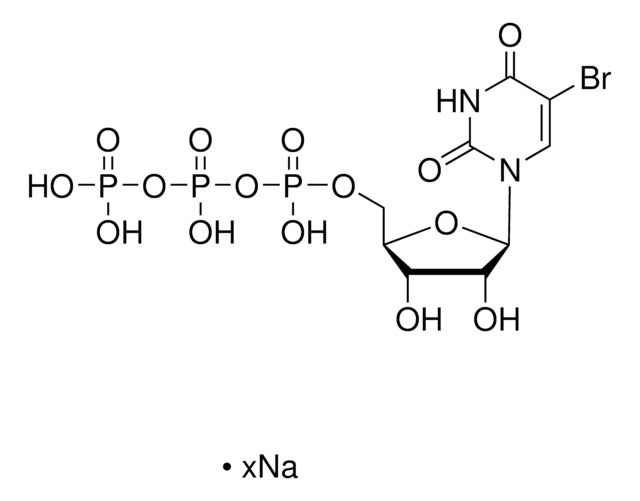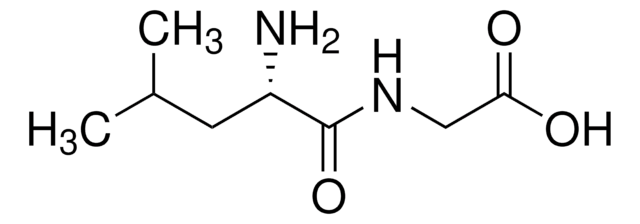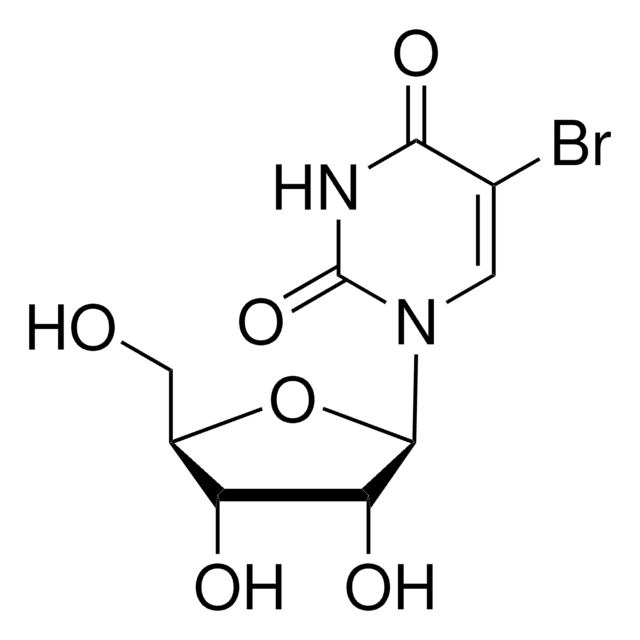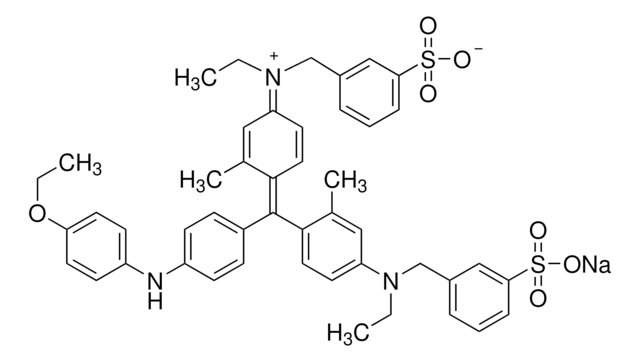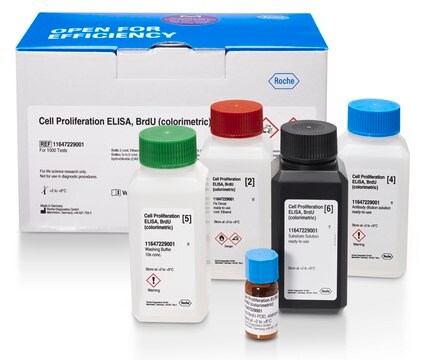Wichtige Dokumente
B0631
5-Bromo-2′-deoxyuridine 5′-triphosphate sodium salt
≥90%
Synonym(e):
5-BrdUTP
About This Item
Empfohlene Produkte
Biologische Quelle
synthetic (organic)
Qualitätsniveau
Assay
≥90%
Form
powder
Löslichkeit
water: 50 mg/mL, clear, colorless to faintly yellow
Lagertemp.
−20°C
SMILES String
[Na].OC1CC(OC1COP(O)(=O)OP(O)(=O)OP(O)(O)=O)N2C=C(Br)C(=O)NC2=O
InChI
1S/C9H14BrN2O14P3.Na.H/c10-4-2-12(9(15)11-8(4)14)7-1-5(13)6(24-7)3-23-28(19,20)26-29(21,22)25-27(16,17)18;;/h2,5-7,13H,1,3H2,(H,19,20)(H,21,22)(H,11,14,15)(H2,16,17,18);;
InChIKey
UWZGQOWZUSBZMC-UHFFFAOYSA-N
Verwandte Kategorien
Allgemeine Beschreibung
Anwendung
- in the labelling of 3′-OH termini of fragmented DNA with double stranded breaks in african green monkey kidney cells
- to label cleaved DNA ends in apoptosis assay in avian tissue sections
- for incorporation into mice prostates for immunohistochemistry studies
Lagerklassenschlüssel
11 - Combustible Solids
WGK
WGK 3
Persönliche Schutzausrüstung
Eyeshields, Faceshields, Gloves, type P2 (EN 143) respirator cartridges
Hier finden Sie alle aktuellen Versionen:
Besitzen Sie dieses Produkt bereits?
In der Dokumentenbibliothek finden Sie die Dokumentation zu den Produkten, die Sie kürzlich erworben haben.
Kunden haben sich ebenfalls angesehen
Unser Team von Wissenschaftlern verfügt über Erfahrung in allen Forschungsbereichen einschließlich Life Science, Materialwissenschaften, chemischer Synthese, Chromatographie, Analytik und vielen mehr..
Setzen Sie sich mit dem technischen Dienst in Verbindung.
